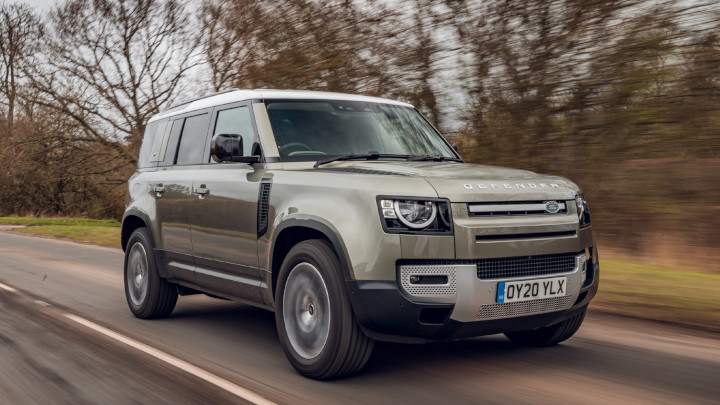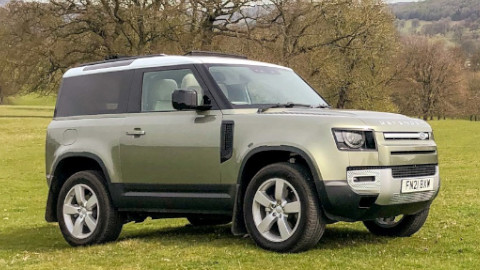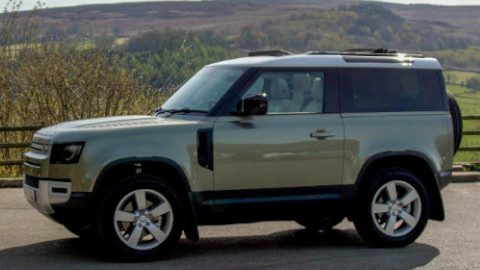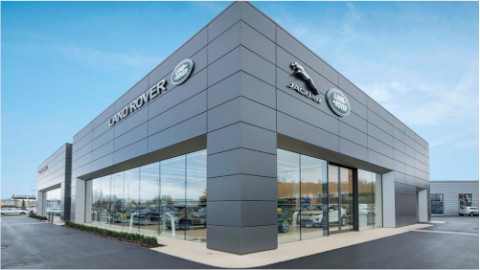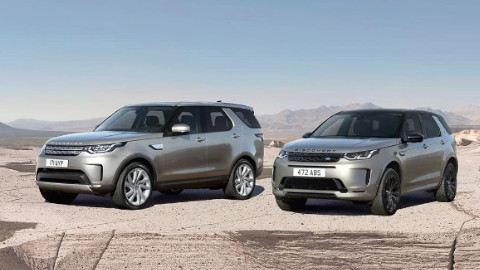Highlights
- Ultimate off-road abilities
- Refreshed design
- Plenty of tech
- Very practical
Introduction
As automotive icons go, the Land Rover Defender has to be top of the pile.
In one form or another, it has been around since 1948, and now it has just been reinvented for the 2020s.
While no longer built in Britain – the new one comes from Land Rover’s multi-million pound factory at Nitra in Slovakia – its development has all been home-grown, and it is probably the finest all-rounder in the world.
But cheap it is not. The new Defender is priced from £40,290 at the time of testing – a far cry from the £450 it would have cost to buy one of the first some 72 years ago or even the £11,000 it cost when the Defender name was first used back in 1990.
Go to the top of the range, and it is possible to shell out the best part of £80,000 on a long wheelbase 110 variant – and that is before you start to add some extras.
We have just got to grips with a diesel powered Defender 110 in bottom but one S grade trim and that is a model priced from £52,110 – or £62,830 with the additions fitted to this particular car.
Design and Practicality
As with its predecessors, the Defender comes in two wheelbases – 90 and 110 – and the longer 5-door version starts from £45,560.
There is also a commercial variant which lacks some of the snazziness such as alloy wheels, but is just as capable, and that is priced from £35,000 less VAT.
It is indicative of the current market where 4x4s do not just need to be rough and tough but also able to make a lifestyle statement that for many is so, so important.
Cargo capacity is plentiful on the Defender 110 and also well protected with rubberised coverings, and ranges from 646 to 2,380 litres on the 5-seat model we tried.
The tailgate opens sideways to the offside, and even with the spare wheel attached to the back, it is easy to operate, while there are design touches such as the so-called Alpine windows in the roof side just like those used on models a generation ago.
It looks the part all round – tough and angular yet right up to date with retro flashes such as textured panels on the top of the front wings and LED tail lights that fit almost flush into the body lines.
Off-road ability is simply awesome with a wading depth of 900mm, a ground clearance of 291mm and approach, break over and departure angles of 38, 28 and 40 degrees.
Towing is up to 3.5 tonnes and there is an option of swapping the 5-seat configuration for a 7-seat set-up with extra seats in the back or go for a 6-seat arrangement with a third seat in the front middle position.
As a 5-seater, room inside is plentiful. The centre console has a useful amount of open space and storage and all models have a delightful interior trim with exposed fixings in the detail.
Engines and Driving Experience
The new Defender has both qualities in spades, and it handles – especially on the road – just as a modern SUV should.
The barge-like turning circle of its predecessor has been banished to the history books, and the new one can turn on a sixpence, making it utterly conventional to park and manoeuvre.
The D240 we tried was powered by a 2.0-litre Ingenium engine with – as the name suggests – 240bhp on tap, making it good for 0 to 62mph acceleration in approximaely 8.7 seconds and a top speed of 117mph.
It is economical as well, and while officially rated at 31.7mpg at best, with emissions of 234g/km, we bettered that, seeing an average of 36mpg on the trip computer at the end of a good road run.
Even a tough off-road stint around Land Rover’s proving ground at Eastnor Castle near Ledbury only brought that figure down to 32.9mpg.
No other Land Rover – and I have driven every model around Eastnor – can match it.
Chris Russon
Much of that efficiency has to be down to the plethora of electronics Land Rover now deploys in its Terrain Response system, which on the Defender is the most advanced application of the software to date.
Select the mud and ruts setting for a spell over harsh terrain – or just leave the system to do its own thing in auto mode – and it makes the sometimes treacherous Eastnor tracks a breeze.
The latest system also has a configurable setting allowing users to preload settings as required for regular trips in certain conditions.
Interior and Technology
The cabin is roomy, comfortable and splendidly finished and while there are nods to the Defender of old – such as the gear shift for the auto box being mounted well up on the facia – everything else is right up to date.
In fact, Land Rover describes the new Defender as its most high-tech car to date, and that includes new software called Pivi Pro for the central touchscreen, a rearview camera which displays in the interior mirror and automatic system updates negating the need – or wait – for them to be done at a dealership.
A full gamut of technology can be fitted to the Defender, and that includes Land Rover’s Clearsight camera equipment, which gives a view of what lies ahead but is concealed by the vehicle.
Summary
In every way, the new Defender is a masterpiece – ready to satisfy the wants of an audience that includes the likes of die-hard Land Rover aficionados, outdoor enthusiasts with a spirit of adventure, and those who just want a fully capable SUV that is right up-to-date on every front.
It is without a doubt the best all-round vehicle in the world and – dare I say it – the ultimate Land Rover.

